Saturn has 62 known moons, but only 7 are visible, and it is possible to observe them through a telescope. Due to its sheer size, the easiest of Saturn’s satellites to see is Titan. This moon has a diameter of 5,150km, which makes it bigger than the planet Mercury.
In the moon rankings, it’s the second largest in the Solar System, only beaten by Jupiter’s Ganymede. It’s also the only moon with a substantial atmosphere.
When you’re gazing at it through your scope, you’re not actually looking at Titan’s surface but at its nitrogen-rich cloud tops.
In terms of brightness, Titan can reach mag. 8.4 (find out what this means in our guide to star magnitude), putting it well within the reach of binoculars, while with a small telescope you’ll have no trouble seeing it.
The remaining 6 visible moons are all within the grasp of a 6-inch scope. If you need help finding them from your location, use an astronomy app or free software like WinJUPOS or Stellarium.
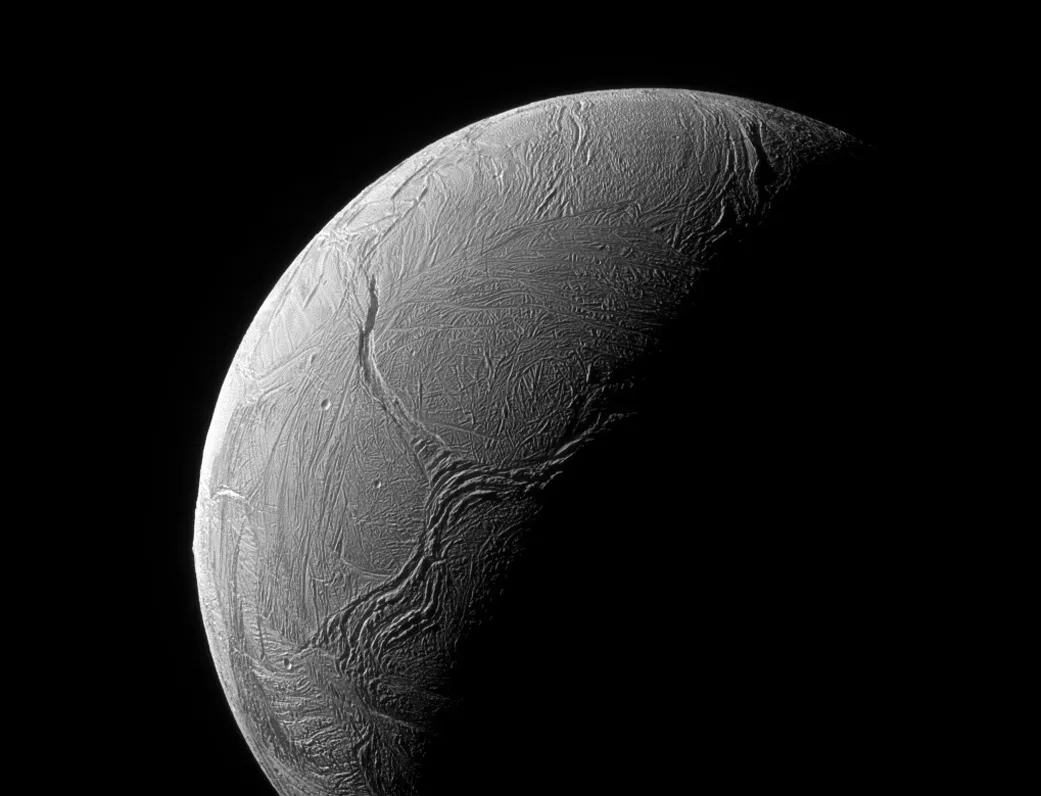
Which of Saturn's moons are brightest?
In order of brightness, after Titan comes Rhea, which shines at mag. 9.7, Tethys at mag. 10.3, Dione at mag. 10.4, Enceladus at mag. 11.8 and then quirky Iapetus.
The unusual nature of this last moon quickly became apparent to its discoverer in 1671, the Italian astronomer Giovanni Cassini.
He first saw the moon on the western side of Saturn but found it missing on a later search, when it should have been on the eastern side.
It wasn’t until 34 years later, when telescopes had improved, that Cassini finally saw Iapetus to the east, because when it’s here it’s almost two magnitudes fainter.
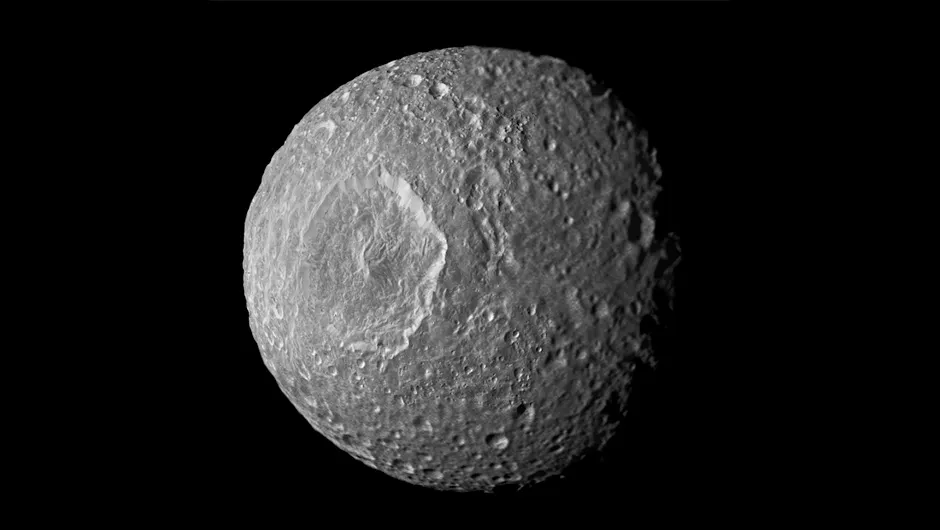
This is why it had been impossible to see it before. Cassini deduced, correctly, that this was because the moon has one very bright hemisphere and one very dark one, and is also tidally locked to Saturn.
This means, like our Moon, it always shows the same face to its planet.
It follows that we see a different part of Iapetus from our Earthly viewpoint when it is to the east or west of Saturn.
As a result, Iapetus varies between mag. 10.1 and mag. 11.9.
However, the faintness trophy goes to Mimas, which at mag. 12.9, needs perfect viewing conditions without any light pollution to see comfortably.
Saturn's best moons to observe
1
Titan
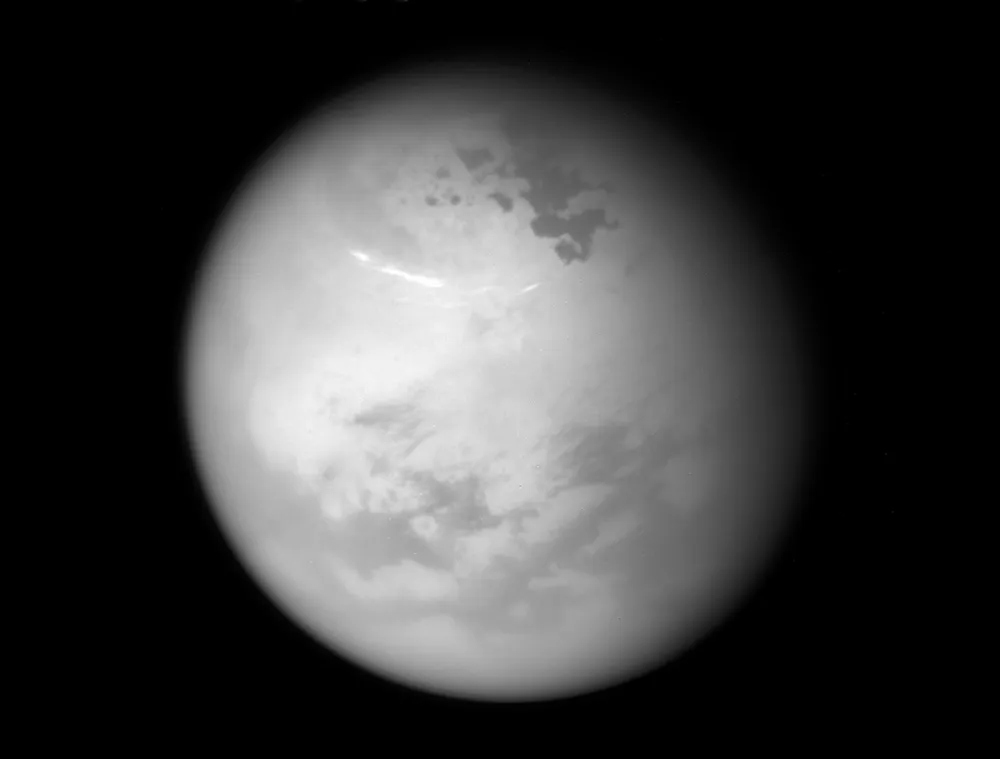
Diameter5,152km
The largest of Saturn’s moons has a 16-day orbit. At its farthest, you’ll find it about five
of Saturn’s ring diameters from the planet, mag. 8.4 at its brightest, which makes it visible in good binoculars. Titan makes up over 96% of the mass of everything orbiting the planet.
2
Rhea
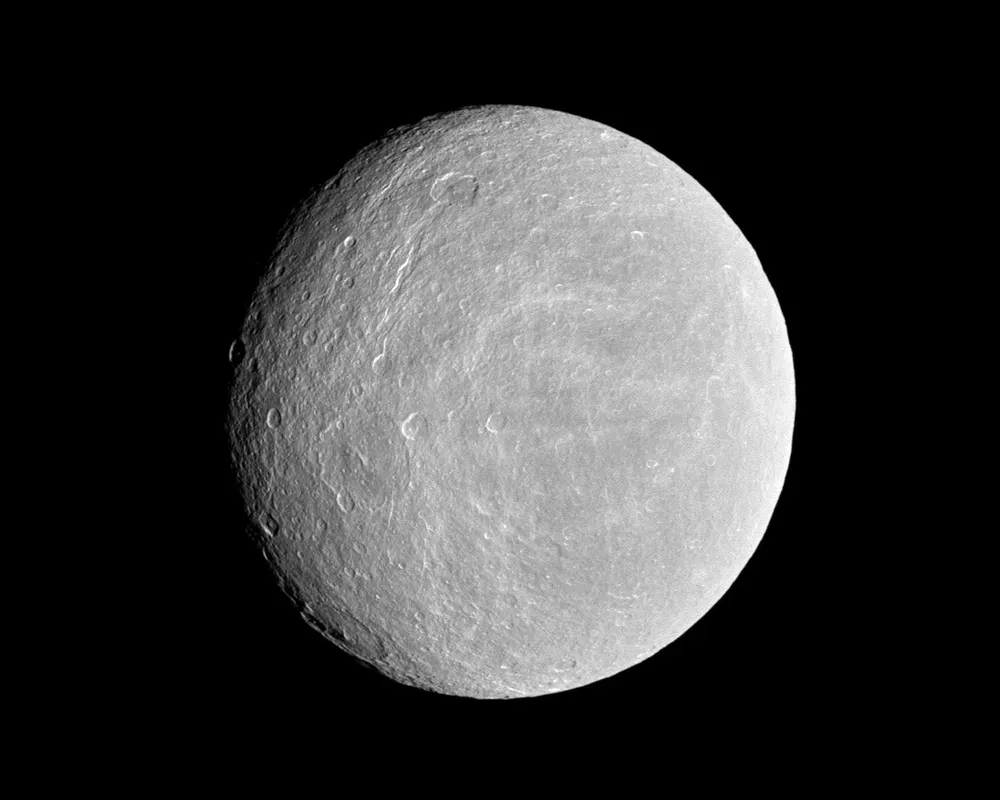
Diameter1,528km
The second largest moon of Saturn, ninth largest in the Solar System, and currently the 20th catalogued in distance out from the planet. It makes an orbit in 4.5 days, reaching just under two ring diameters from Saturn. It is mag. 9.7, making Rhea an easytarget for a 3-inch refractor telescope.
3
Iapetus
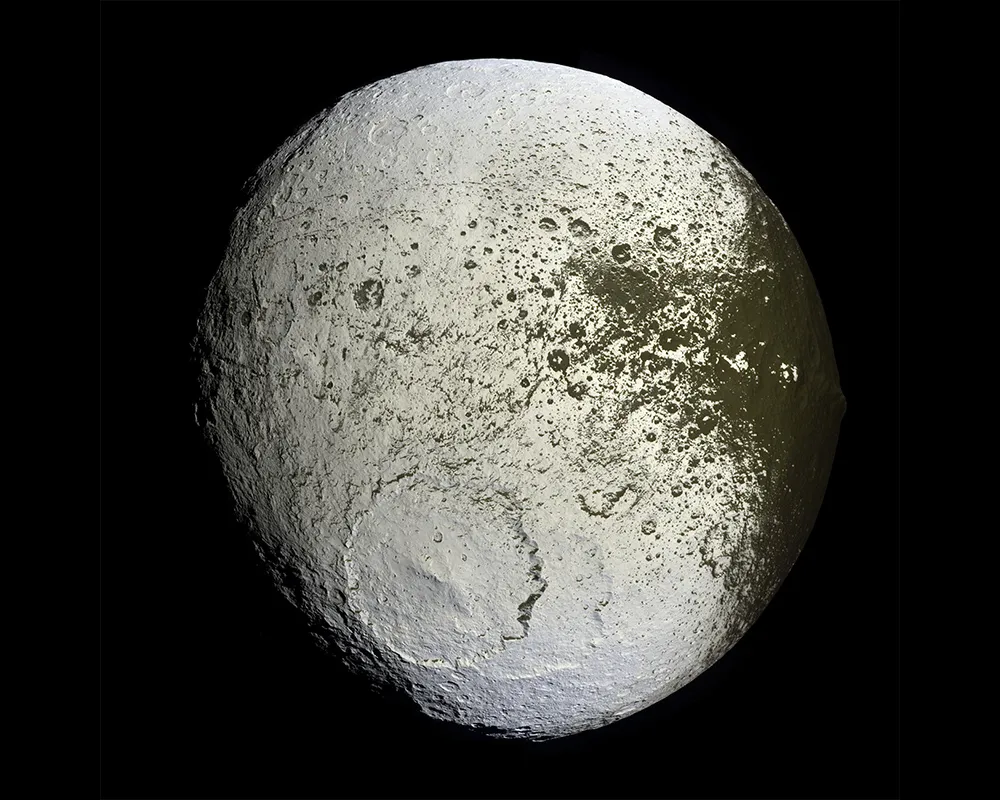
Diameter1,469km
This is the third largest and most distant of the main moons of Saturn. Its 79-day orbit, which is the most inclined of the inner satellites, takes it out to 12 ring diameters from the planet. The visual magnitude ranges from 10.1 to 11.9, so Iapetus needs about a 6-inch scope tosee it at its darkest.
4
Dione
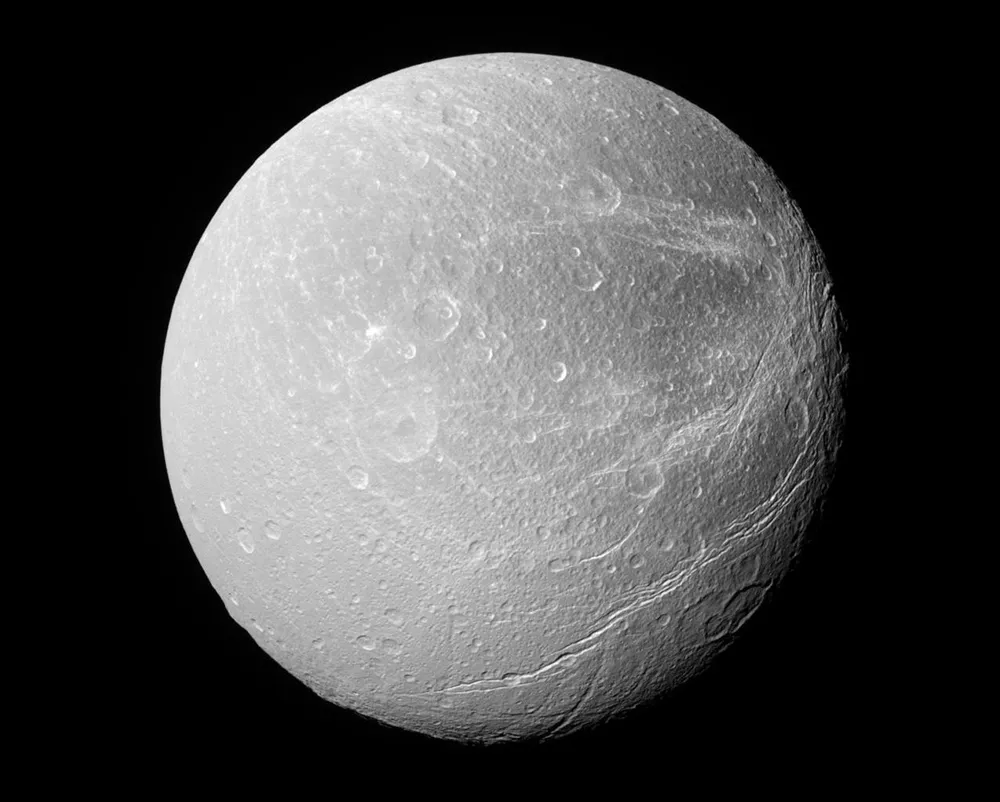
Diameter 1,123km
This moon orbits up to 1.5 ring diameters from Saturn over 2.7 days. Its visual magnitude of 10.4 makes it visible on dark nights with a 3-inch refractor. This is the densest of the moons, meaning it may have a large rocky core. Helene and Polydeuces,two smaller moons, share its orbit.
5
Tethys

Diameter1,060km
This moon orbits about one ring diameter away from the planet and takes 1.9 days to do so. It has a magnitude of +10.3 and so can be seen in a 3-inch refractor. Tethys has a great canyon that stretches three- quarters of the way round the moon, and two co-orbital moons, Telestoand Calypso.
Pete Lawrence is an experienced observer and a co-host of The Sky at Night.
